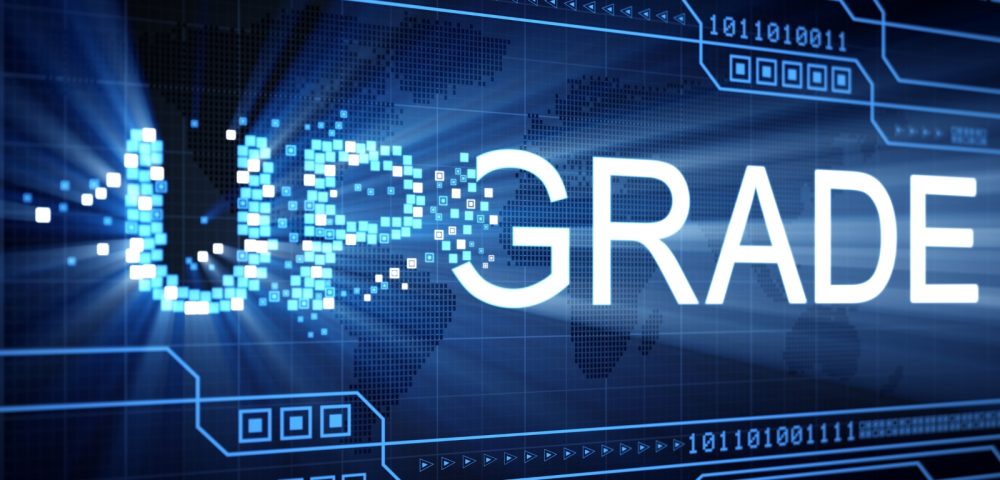What comes to your mind when you think of Japan? Lands of cherry blossoms, a healthy food culture, and manga landscapes, but above all, bullet trains and robotics, right? Although Japan consistently ranks in the top 20 of the global innovation index, it is also visible that there is a clear lag between the country’s digitalisation pathways and cybersecurity grids. Considering the fact that Japan has been the latest target of the Chinese hacker group ‘MirrorFace,’ and these cyberattacks have delayed the Japanese flights and port operations massively, it proves that innovation without a proper digitalisation mechanism and protection is nearly pointless.
In this article, we discover everything about why Japan is falling behind, what actions they are implementing, and what more needs to be done right away.
Why Japan is Said to Be Falling Behind Digitally

Reliance on Outdated Systems
One of the biggest reasons Japan is falling behind digitally is its heavy reliance on outdated systems. Even though the country is famous for robots and bullet trains, many of its daily operations still depend on old-fashioned tools like fax machines, floppy disks, and hanko seals (personal stamps).
For instance, 77% of schools still use fax machines to communicate, which seems almost unbelievable in a world where emails and apps dominate.
Until recently, the government even required floppy disks, technology that stopped being manufactured over a decade ago, for some official document submissions. These relics of the past are so deeply embedded in workplaces, schools, and public services that people stick to them without thinking twice.
Tourists might see Japan as futuristic, but beneath the surface, so much still runs on decades-old processes. This dependence slows down innovation and makes it hard for Japan to keep up with global digital standards.
Cultural Resistance to Change
Another major factor holding Japan back digitally is its cultural resistance to change.
Japanese society scores very high in something called ‘uncertainty avoidance,’ which means people prefer predictable, stable systems rather than taking risks with something new. Even younger generations tend to follow the old ways simply because they feel it is safer and more reliable.
For example, many employees still go to their offices during the pandemic just to stamp documents with a hanko seal instead of using electronic signatures. When asked to use online portals, people worry they will make mistakes or choose the wrong forms, so they stick to visiting the office in person. This mindset, where the familiar feels ‘reassuring’ and change feels risky, stops people from embracing digital tools, even when they are more efficient.
Lack of Digital Adoption in Daily Life
Despite Japan’s high-tech image, digital adoption in daily life is surprisingly low.
Japanese people still prefer traditional methods for things like payments and paperwork, and many businesses lag in modernising their processes. For instance, only around 32% of people use mobile payments at stores, even though cashless systems are common worldwide.
Small and medium-sized enterprises (SMEs), which make up over 99% of Japan’s companies, are especially slow, with about 25% having not even started digitalising their work.
Administrative tasks are another pain point: as we mentioned above, even though some forms can now be done online, many still require people to visit offices, wait in line, and fill out paper forms by hand.
According to the reports coming from Japan, during the pandemic, 60% of remote workers still had to physically return to offices every week just to handle paperwork. This reluctance to let go of in-person and paper-based processes shows how deep-rooted habits and inefficiencies hold back Japan’s digital progress.
Cybersecurity Vulnerabilities
This has become the main roadblock ahead of Japan’s digital path.
Its slow digital transformation has left it vulnerable to cyberattacks, which are becoming more frequent and severe. Hackers have already targeted critical sectors, disrupting flights, shutting down ports, and stealing sensitive data from government agencies and firms.
For example, in one attack, more than 70 Japan Airlines flights were delayed, and the country’s largest port was brought to a standstill for over two days. The government itself reports that a cyberattack hits Japan every 13–14 seconds, which is undoubtedly a staggering figure. Yet many companies still do not treat cybersecurity as a priority.
Budgets for security remain small, and decision-makers lack the knowledge to understand IT risks. Since executives tend to focus more on day-to-day operations than potential threats, Japan’s digital defences remain weak, putting its economy, public safety, and even international alliances at risk.
Methods Used to Boost Japan's Digital Resilience

Launch of the Digital Agency and Active Cyber Defence Law
To kickstart its digital transformation, Japan launched the Digital Agency in 2021, showing it had finally recognised how serious its lag had become.
This agency is responsible for modernising government processes, pushing digitalisation across public services, and making everything more efficient. But that is not all.
In May 2024, Japan passed the Active Cyber Defence Law, which was a bold step forward. Before this law, Japan’s privacy rules even blocked authorities from tracing cyberattacks properly, leaving hackers free to strike. Now, the government can actively work with critical infrastructure providers like telecom companies to track and disrupt hostile servers before they cause more harm.
It is a big change for a country that has been so cautious about digital reforms. However, even though these moves sound promising, digital experts wonder if the changes can keep up with the fast pace of cyber threats already hammering the country.
Plans to Quadruple Cyber-Defence Workforce by 2028
Japan also realised that laws and policies mean nothing without enough skilled people to carry them out, so it decided to quadruple its cyber-defence workforce by 2028.
That is a jump from 890 personnel to 4,000 within just a few years, with support from about 16,000 staff overall. This ambitious plan came out of its new national security strategy, recognising that cyber threats are no longer just about stolen data, but they are a national security risk.
For example, after hackers quietly infiltrated executives’ Microsoft accounts at the Japan Aerospace Exploration Agency and remained undetected for months, it became clear the country needed more boots on the digital ground.
This is where increasing the workforce will help Japan monitor attacks more closely, respond faster, and even preempt some attacks instead of always playing catch-up. Still, with a global shortage of IT talent, some people worry whether Japan can find and train so many experts in time.
Mandatory Programming in Schools, ¥300B Investment in Education and IT Fields
To tackle its deep skills gap, Japan started building future talent from the grassroots level.
The nation started making computer programming mandatory in schools. This began with middle schools back in 2012, expanded to primary schools in 2020, and reached high schools in 2022.
On top of that, the government pledged a massive ¥300 billion investment to support universities and technical colleges, especially in fields like digital technology. The idea is that teaching kids to code early and supporting higher education in tech will eventually create a strong pipeline of IT professionals.
But the problem is that this is not a quick fix. Some schools reportedly only spend 3–5 hours a year on programming lessons, sometimes just teaching basic typing. On the bright side, the government plans to increase university enrolments in science and IT by 19,000 by 2030. Not to mention that it is a solid start, but many believe the education system needs more consistency and depth.
Corporate Cybersecurity Ratings and Foreign Talent Recruitment
On the business side, Japan introduced corporate cybersecurity ratings, pushing companies to keep their software updated, limit access to sensitive data, and meet minimum security standards. This move aims to raise awareness in the corporate world because, shockingly, about half of Japanese firms do not even discuss cybersecurity at the executive level.
Companies in critical sectors, like energy and semiconductors, now face stricter requirements, and if they fall short, they risk losing business deals. At the same time, Japan has started recruiting foreign tech talent to fill its growing IT workforce gap.
Over the past decade, the number of foreign ICT workers has tripled to about 91,000, now making up 3.1% of the workforce. But challenges remain. Salaries in Japan are normally lower than in other countries, and the strict workplace culture can feel unwelcoming to outsiders.
What More Needs to Be Done to Win the Global Digital Race

Integrate Smart Manufacturing and IoT in Factories
Japan’s manufacturing sector is already known for precision and craftsmanship. Now it can fully adopt smart factories by embedding IoT sensors, robotics, and automation systems into its production lines. This would allow real-time monitoring, predictive maintenance, and seamless data sharing across the supply chain.
For example, factories could reduce downtime and improve efficiency by analysing machine data to predict failures before they happen.
Embracing Big Data and Advanced Analytics for Decision-Making
Japanese companies can transform decision-making by collecting and analysing large volumes of data across industries, from consumer behaviour to logistics to energy usage. Advanced analytics tools can uncover patterns, optimise operations, and help leaders make faster, evidence-based choices.
This also helps businesses become more customer-centric and competitive globally. For instance, predictive analytics could help industrialists adjust output based on demand forecasts, reducing waste and maximising profits.
Adopting Cloud Computing and Digital Platforms Across Industries
Migrating business processes to cloud-based systems and digital platforms can enable more agile, scalable, and collaborative operations. For Japan, this means government agencies, SMEs, and corporations can move away from outdated, localised servers and legacy paperwork toward modern, digital-first workflows.
Cloud solutions also support remote work, which became crucial during the pandemic, and open doors for innovations like digital twins and virtual simulations in manufacturing and urban planning.
Foster Workforce Upskilling and Collaboration with Emerging Technologies
Since the world has stepped into the realm of Industry 4.0, it requires a workforce skilled in technologies like AI, machine learning, robotics, and cybersecurity. Japan can embrace this by investing more in education, upskilling programmes, and partnerships between universities, companies, and tech startups.
Encouraging collaboration between humans and machines, where employees work alongside AI and robots, can help maximise productivity while preserving Japan’s emphasis on quality and detail.
Strengthen Proactive Cybersecurity Measures and International Cooperation
Japan must develop stronger, proactive cybersecurity measures and build better international partnerships to defend against increasingly sophisticated cyber threats. Right now, the country reacts too slowly, as seen when hackers infiltrated Microsoft accounts at Japan’s aerospace agency and went unnoticed for months.
While the Active Cyber Defence Law is a good start, Japan still needs to adopt more aggressive strategies to detect, prevent, and even disrupt attacks before damage is done. This means investing in advanced threat intelligence, improving response times, and creating secure communication channels with allies.
As a key U.S. ally in East Asia, Japan’s cyber vulnerabilities also pose risks to its international relationships and collective security agreements. Strengthening ties with global partners and aligning with best practices can not only protect Japan but also help it become a leader in the worldwide fight against cybercrime.
A Wake-Up Call for Japan and the World

The race toward digital dominance is a double-edged sword. One blade cuts through inefficiency, but the other exposes vulnerabilities. Japan’s story is a wake-up call for industries globally, which is to ‘transform smartly and defend fiercely.’ True progress comes when smooth digitalisation meets impenetrable cyber shields. Every floppy disk retired and firewall strengthened brings us closer to a world where ambition is not undermined by oversight. It is no more ‘one step forward; it is one ‘correct step’ forward!’.







